
Inductees 2016
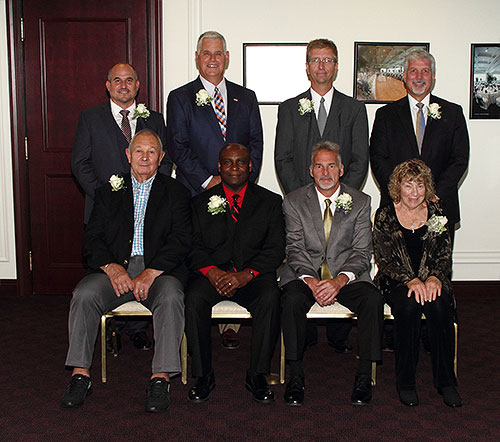
Meet the 2016 Mid Mon Valley All Sports Hall of Fame Inductees
Seated from left: Bobby Burns, Jim Edwards, John Ballein, and Joanne Giannini, representing Dr. Joe Fedorchik, Jr.
Standing from left: Ken Kulak II, representing his father Ken Kulak, Brigadier General Dave Papak, Scott Wolfe, representing Barney Wolfe and Keith Bassi
John Ballein, Ed. D.
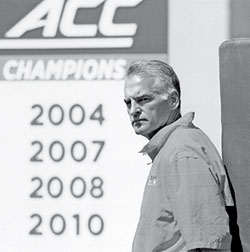
A native of Bentleyville, Pennsylvania, John Ballein recorded many accomplishments as a multitalented athlete at Bentworth High School in football, baseball and wrestling. A 1979 graduate, Ballein excelled at football where he starred on the defensive side of the ball, setting several Bearcats records, including single-game tackles, single-season tackles and most points earned on defense for tackles, assists and interceptions. Ballein was named Bentworth’s Outstanding Defensive Player, and was a Tri-County all-star and the winner of the Paul Silver All-Around Athlete of the Year award in 1979.
Ballein went on to play linebacker at Indiana University of Pennsylvania, where he graduated with a degree in Health and Physical Education in 1983. He later earned his Master’s in Education from Old Dominion University in 1987, as well as his Doctorate in Education from Virginia Tech. In 1983-84, Ballein served as a teacher and a football, basketball and track coach at Woodrow Wilson High School in Portsmouth, Virginia. He then moved on to Western Branch High in Chesapeake, Virginia, in 1985-86, where he coached football, basketball and baseball.
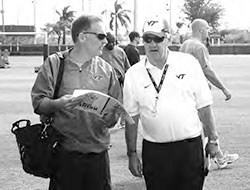
John Ballein (left) has always been there for Virginia Tech Head Football Coach Frank Beamer (right).
No one knows better the impact Ballein has had on the athletics programs at Virginia Tech than Hall of Fame Coach Frank Beamer. “John is simply the best in the business. His values and work ethic are in line with mine and he is a big reason Virginia Tech is one of the top athletic programs in the country. You’ll be hard pressed to find anyone who disagrees.” Ballein built his reputation as a tireless worker committed to the betterment of the student athlete and the program while serving as Frank Beamer’s “right hand man” for the last 30 years. Upon Coach Beamer’s retirement following the 2015 season, he personally thanked John for the lasting imprint they had made at the University and his contributions that led to 280 victories together. Ballein was on board for every minute of Coach Beamer’s Hall of Fame run at VT, serving on Beamer’s first staff as a graduate assistant coach, then recruiting coordinator, and ending as the Senior Associate A.D. in charge of football. Virginia Tech Director of Athletics Whit Babcock was quick to promote Ballein following Beamer’s departure, elevating him to the executive level within VT Athletics, where he now oversees a variety of departmental programs.
During Ballein’s tenure at Virginia Tech, 93 players were drafted into the National Football League. In addition, Tech has appeared in 23 consecutive bowl games, the longest active streak recognized by the NCAA. Since 2000, Virginia Tech senior football players have graduated at a 94% rate, one of the top percentages in the country.
John Ballein is married to the former Stephanie Green, the Senior Athletic Administrator at Radford University, Radford, Va. They have two daughters, Jordan Gray, a junior at Radford University and Jalyn Ann, a freshman at Georgia Southern University. Ballein’s mother, Ann, still resides in Bentleyville.
Keith Bassi, J.D.
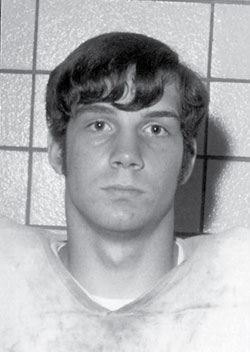
Academics and athletics have always been a constant in the life of Keith A. Bassi. He has gone on record to say that “Much of what I learned and value in life were taught to me at a very early age by my mother (Lillian Majoros Bassi) at the kitchen table and my father (Melvin B. Bassi) either in the backyard or on football or baseball fields.” And he has continued the pursuit of both in his career as the managing attorney in the Mon Valley based law firm of Bassi, Vreeland and Associates, P.C. and an ardent supporter of youth sports.
According to Bassi, “Being raised in the Mid Mon Valley was a blessing in that the quality of teachers and coaches alike were, in my opinion, unequaled. That mentoring influence coupled with the high caliber of students and athletes born and raised in this area speaks volumes as to why there are so many successful people who have rewritten the record books of business and sports alike.
Of course, it didn’t hurt that he was raised in a competitive household with brothers Bradley and Neil, who each are successful in the legal field and banking respectively as well as having outstanding sports resumes. His youngest brother Mitchell arrived in the family after Bassi had left the household, but he too exudes those same qualities in the chemical industry. A competitive atmosphere is where Bassi thrives. There is a direct relationship between the adversity he has faced and the success that he has achieved in gaining his place in the Mon Valley Sports Hall of Fame. Beginning in the mid 1960’s Bassi left the backyard to begin playing baseball for his father in the Carroll Little League and football in the Charleroi Midget Football League. “Those were magical days. We had great fields on which to practice and play and wonderfully instructive coaches who stressed the fundamentals of the games.” he recalls. Playing the hard-nosed positions of catcher in baseball and fullback/linebacker in football, Bassi began his two sport career and never looked back.
Attending Carroll Junior High School was the real start of a serious pursuit of academics. Teachers and coaches, such as James Fernandez and Russell Leach, were inspirational role models to him in the classroom and while playing football and basketball. “I learned that there was no short cut to winning on and off the field. It was: study, practice and execution. And when you thought you had it right, you did it again.” It was evident that Bassi was a potential impact player in football, as Leach even made the prediction in his ninth grade year that Bassi would start on the Ringgold Varsity football team the next year. Fernandez is credited with demonstrating the balance of being a student and athlete. “One of the most difficult conversations that I had was telling Mr. Fernandez that I would not play basketball in High School despite the nearly undefeated record in basketball at Carroll, because I did not want to compromise my love for football and baseball and desire to excel in the classroom,“ says Bassi. “He understood and became one of my biggest supporters during my high school years.
When Bassi entered Ringgold High School it was a far different composite than today. There were two campuses. He attended Monongahela with over 480 in his class alone. The Donora campus had another 175 in his class. Yet the two sides of the same school never met, except under the spotlight of sports. More significantly, Ringgold football was coming off a winless 1970 season and hired a new coach for the 1971 campaign.
“When I was about to enter high school, I was asked by my father if I wanted to attend a private academy near Pittsburgh instead of Ringgold,” recalls Bassi. “I told him no, that I wanted to play football for Chuck Abramski.” Bassi had been on the sidelines of many high school and college football games that his father “Mel” (also inducted to the Mon Valley Sports Hall of Fame) officiated. It gave him an up close view of the coaches and players and the way they interacted. Abramski was at Brownsville struggling for wins and trying to rebuild their program. But as Bassi remembers him, there was never a more passionate man for the game. And despite their mediocre records, Abramski’s teams were the hardest hitting and most fundamentally sound teams Bassi had observed.
His admiration for Abramski paid dividends, but it took some investment of time and effort. When the team was assembled for the start of the 1971 campaign there were only a handful of players, 5 of whom were returning seniors. By the end of that season the squad grew to 35. Starting from scratch, Bassi was the first sophomore that Abramski had ever started. And he never left the field. In fulfillment of the prediction, Bassi played every down offensively, defensively and on special teams. Indeed, until the next to last regular season two years later, he never left the field.
The 1972 season saw improvement in the Ringgold football team’s record and the number of players on the team. Abramski instilled a new pride in the school and the team had its best season ever, 4-4-2 which included a 34-34 “win” against Monessen. The promise of better things to come was evident as Bassi was joined in the backfield by Marvin “Fidget” Corbett and a lanky quarterback starting with that Monessen game named Joe Montana. David Oslegar, Bob Hillman, Joe “Punky” Turkovich, Bob “Tank” Tarabella and John Gattto each became seasoned veterans of the Big 10 under the tutelage of one of the best assembly of coaches ever. Each became famous in their own right: William Vasiloff, Paul Zolak, Jeff Petrucci, Alan Veliky, Frank Lawrence, and Lou Defilice.
The die was cast for the 1973 season. However, prior to its start Bassi, who had started on defense as a linebacker for two years was asked by Defilice to move to middle guard to utilize his quickness and strength. Although disappointed at first, Bassi made the most of his sudden reassignment and quickly put up some serious statistics: 14 fumbles caused in 7 games.
Offensively, the 1973 was a powerful machine, outscoring opponents 265-84. Bassi and Corbett both were atop the league’s scoring leaders. In the end, Bassi won out despite not playing in the last two regular season games with 66 points. It was the first time a Ringgold Ram won the scoring title and the number of points he scored was a new school record. On the last game of the regular season Monessen’s Joe Como tied Bassi for the scoring title in their defeat of Thomas Jefferson.
Thomas Jefferson under Bap Manzini was the only school that year to beat Ringgold - by a score of 8-6 in the season opener. But the Rams went on to post an 8-1 record that included a 34-6 victory over Joe Gladys’s Monessen Greyhounds. The principals of the Big 10 schools elected Abramski’s Ringgold Rams to represent the league in the playoffs. A first for the school and the coach Abramski was effusive with praise for his team. He told reporters that “Montana is the best quarterback in the state and Keith Bassi is the Rams MVP.”
The season ended with a loss to Mount Lebanon in the playoffs. But the season was far from a loss to Bassi. He was named to the Big 10 All Star Team, the All W.P.I.A.L. All Star Team, the Western Pennsylvania Football Coaches’ All Star Team, nominated to the Pennsylvania Big 33 All Star Team, named as a Prep All American, and receiving the National Football Foundation and Hall of Fame “Excellence in Scholarship and Athletics” award presented by its Pittsburgh Chapter. At the Big 10 banquet held at the Twin Coaches, Bassi was the first recipient asked to speak on behalf of the players. His eloquence and grace was recognized as one of the finest speeches made by a high school student according to the evening’s keynote speaker Fran Curci, head coach of the University of Kentucky.
As if the accolades in football were not enough, Bassi was also a three year starter on the Ram baseball team under coaches James Campbell and John Kendra. The Ringgold Rams, in his senior year were the 1974 W.P.I.A.L. runner ups. Bassi and Kendra spent several summer seasons together in the American Legion league for the Charleroi Magicians. Both at Ringgold and with the Magicians, Bassi played every inning of every game in each of his years. At Ringgold he was the catcher, his position of choice. With the Magicians, he was an outfielder and spelled Charleroi’s Pete Labrasca at the catching position. Bassi reflected, “When I reflect on the number of superior players on those teams it is no wonder we had such tremendous success.” In addition to Montana (Pro Football Hall of Famer), there was Ulice Paine (basketball star at Marquette and past president of the Milwaukee Brewers) , “Cat” Whitefield (Baltimore Orioles minor leaguer), Mark Deutsch (record setting pitcher and college coach), “Tucker” Celaschi, Ron Mamie, Michael Dipoala, Michael Toth, and Billy Doyle to name a few. While with the Magicians, Bassi was the second leading hitter behind Labrasca with a .375 average, which helped them to the American Legion District 25 Championship.
At the end of his senior year, Bassi, a member of the National Honor Society and ranked 8th in his class having all advanced placement and accelerated courses, was named as the recipient of the 1974 Howard W. Crane Award as the top athlete in Ringgold High School besting classmates Joe Montana, an all W.P.I.A.L. basketball pick and an all state quarterback bound for Notre Dame (Mon Valley Sports Hall of Fame) and the state record breaking long distance runner Melvin Boyd (Mon Valley Sports Hall of Fame). “That is one of the stories that Yale University recruiting Coach Dave Kelly loves to tell,” elucidated Bassi with a smile, “he got the best athlete among the greats at my high school.”
Yale University was a predestined choice for Bassi even though he was recruited by almost all Ivy League schools and several other prestigious universities including the military academies. He recalled making his decision after watching the 1969 Blue-Gray All Star Game featuring Yale greats Tom Doyle and Calvin Hill being coached by Yale’s iconic Carmen Cozza (34 years at Yale: 177-111 record). The announcers spoke so highly of Yale University’s perspective of athletics and academics, and were so complimentary of Carm Cozza, he was hooked. Bassi was given an initial introduction to the Yale head coach when Chuck Abramski abruptly picked up a phone during a lunch break and simply called him from his coaches office. They spoke like old friends because they spoke with the passion for the game even though they had never met. Later in the season, Frank Pizzica, a sports aficionado arranged for an interview by several Yale alumni from Pittsburgh at his Buick dealership in Monongahela. “I entered the smoke filled room after practice one evening and met the general counsel to the then Consolidated Coal, two vice presidents of Jones and Laughlin Steel, and a Pittsburgh lawyer. My letter jacket seemed out of context with their suits, but they each became great friends and advocates for Bassi to matriculate at Yale.
In 1974 Yale did not have varsity eligibility for freshman. There was a freshman football and a freshman baseball team. Bassi quickly made an impression on the football field with head freshman coach Harry Jacunski (one of the original “Blocks of Granite”) as well as his teammates. He was named the starting fullback and was elected by his teammates as the Captain of the Yale Freshman Football Team. Bassi enjoyed success on the field and won the honors as the team’s leading rusher averaging 4.1 yards per carry, and second leading receiver. In the Brown game alone, Bassi ran for 97 yards and scored a touchdown in 21 carries. “I felt as though I was exceptionally well prepared and conditioned to achieve success when I entered Yale.” Bassi said. “Although I was adjusting to the rigors of Ivy League competition in my classes, the sports outlet became a necessity for me and helped me with time management.” At the end of the 4-2 season, Bassi was named the winner of Yale’s Bobby Hertz Award as the teams’ Most Valuable Player with prospects of even better things to come.
In the spring of 1974, history repeated itself. Bassi led the freshman Bulldog baseball team as the starting catcher and was elected captain by his fellow teammates. His leadership and athletic prowess was evident, according to the Varsity head coach Ken McKenzie, a former major leaguer who offered to place him in the renown Cape Cod League. Bassi’s sophomore fall was spent as a fullback in the 1975 football campaign where he played alongside a cascade of stars including Gary Fencik (Chicago Bears) and Stone Phillips (NBC Dateline). In the spring of 1975 he not only lettered in baseball as a sophomore, but he started every game as catcher developed a reputation for a bullet-like throw from behind the plate knocking off attempted steals.
The following seasons when Bassi was a junior, a tragedy took him down a path he had previously traveled. Preceding the fall work outs, Yale’s All Star middle guard, Brent Kirk was killed in a boating accident. During the preseason, the coaching staff struggled to fill the void. Coach Cozza looked to Bassi to help. “He called me into his office at the start of the week before our first regular season game against Brown, and asked if I would switch my position to middle guard to help the team since he knew I had experience there from high school. I had mixed emotions because I knew that I was expected to see a lot of offensive play, but I agreed to make the change to help the team.” It was a move Bassi never regretted.
In the first game at his new position Bassi had seven tackles, 3 quarterback sacks and caused a fumble. It was impressive enough a performance that the ABC regional broadcasters made note of him as the runner up player of the game. The 1977 campaign continued with Bassi making quite a reputation for himself on defense even though he split time with Dave Humphreville. “We shared playing time, something to which I was unaccustomed. But it helped me in the end and we developed a great friendship in the competitive process of perfecting each of our contrasting and unique styles of play. They called me “Count Quick” because of my quickness off the ball that disrupted blocking schemes and pulling guards that gave our linebackers a chance to make tackles.” That quickness from the middle guard position, despite splitting time on the field, led Bassi to a team third place finish in most tackles for the season (68) and he led the team in tackles for losses (12). In addition, his four fumbles caused and six quarterback sacks tied for the team lead. The crowning glory to the season was the last game against Harvard. In that fabled game before a packed stadium in Cambridge, Bassi single handedly destroyed the complex Joe Rustic Canadian styled offense with 12 tackles, two for a loss, a caused fumble and a recovered fumble. For his efforts Bassi was named by the ABC Broadcasters as the Chevrolet Defensive Player of the Game for which his alma mater was awarded a scholarship.
Bassi was a key ingredient to Yale winning a co-championship in the Ivy League that year. According to sports writer Dave Senko, Bassi may rank as one of the most honored part-time football players to ever don an Eli uniform: First team All-New England by the AP; All-Ivy Second Team; Second team All New England by the UPI; Eastern College Athletic Conference Division 1 All Star Weekly Honor Roll; ABC Player of the Game vs. Harvard ’76.
In the springs of his junior and senior years, Bassi continued to demonstrate his athletic prowess as he also was demonstrating success academically. “I declared Administrative Science as my major. It was a blend of economics, mathematics, psychology, sociology and political science. It was a perfect background from which to launch a career in the law and banking.” While on the diamond those years, Bassi was a significant contributor with his timely and powerful hitting. “As a game, baseball was always my first love, even though I have been recognized for more success in football.” His efforts among the Yale nine did not go unnoticed though. Bassi was named as the 1977 G.H. Walker Award Winner as the Most Valuable Player for Yale Baseball.
The 1977 football campaign also ended in a championship for Yale, this time solely in first. “We had such a talented team and I was honored to be a part of it. We were compared among other Division 1 schools and our defensive statistics were some of the best in the country. Offensively, we were led by John Pagliaro, an All-East All Star, who re-wrote the record books for rushing, and John Spagnola (Philadelphia Eagles) who was one of the best tight ends I ever witnessed.” Although a pre-season injury hampered his Senior year, Bassi came out of an ankle cast week after week and contributed with his quick play. Against Princeton, he was awarded the game ball by the coaches. According to his defensive line coach, Dave Kelly, “Keith is one of the finest individuals I have come in contact with in my coaching career at Yale. He is a real leader in every sense of the word. His efforts played an important role in our winning two Ivy Championships.”
After graduating Yale in 1978, Bassi entered Duquesne University School of Law and earned a Juris Doctorate in 1981. He joined his father Melvin and brother Bradley in the practice of law. He became and continues to be the managing partner of the firm, now Bassi, Vreeland and Associates, P.C., with its 7 lawyers and locations in Charleroi and Washington, PA. He is General Counsel to the cfsbank, Solicitor for the City of Monongahela, Charleroi Area School District, Mid Mon Valley Industrial Development Authority, Authority of the Borough of Charleroi and the Mon Valley Regional Chamber of Commerce.
Bassi, true to family tradition, coached youth sports for 17 years in the Mon Valley. This included five years as the President of the Monongahela Youth Baseball and Softball League, baseball and soccer coaching in Monongahela and softball coaching in Jefferson Township, Fayette County. He observed “Some of the most rewarding experiences in my life came while on the sidelines watching the smile of success crease the face of a young boy or girl developing and perfecting the fundamentals of the games they play.”
During the development and construction of the expanded Mon Valley Y.M.C.A., Bassi served as its president for two years. It was gratifying to see the response of the people of the Mid Mon Valley in supporting such a facility that contributes to the health and welfare of our residents at all ages of their lives. He has also served as the past president of the Charleroi Rotary Club.
Professionally, Bassi is known as an expert in the fields of real estate, estate planning and administration and business and banking law. He has served as a Past President of the Washington County Bar Association and served for 10 years as its delegate to the Pennsylvania Bar Association. He has been engaged to represent organizations and individuals in international real estate and business matters and has assisted his associate, John Nubani (Yale, ‘78) in sporting events promotions throughout the world.
He is married to the former Betsy Forsythe, a former Charleroi High School cheerleader and former coach of the Charleroi Midget League Cheerleading squads, and has four children, Brooke Celaschi, Marianne Russo, Michael Bassi, and Kiersten Mallon, and six grandchildren and one great grandchild (all boys!).
“We, who have been born, raised and made our lives in the Mid Mon Valley, have been enriched with a legacy of those who came before us who reached out to educate us by sharing their talents and teaching us the skills to succeed in the incredibly challenging academic and athletic arenas of life. We are now charged with continuing that legacy so that our children, too, realize that they are better prepared than most because they too were touched by this community of talented and caring people.” - Keith A. Bassi, Esq.
Bobby Burns
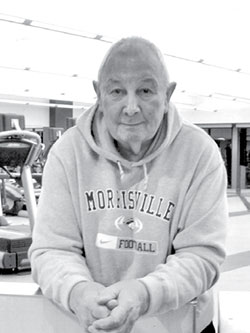
Bobby graduated from Monessen High School in 1957 where he earned football honors as a receiver under Coach Armand Niccolai, MMVASHOF class of 1964. Bobby was named to the All-Big Six Conference First Team, All-County and All-State Honorable mention. “Monessen teams in those years never lost more than two games in any of my three seasons,” reflected Burns. Donora Coach Jimmy Russell of Donora remarked in 1957 that, “Bobby Burns is the best defensive end I have seen in years.” Several colleges pursued the services of Burns.
Bobby recalled his junior high football mentor, Joe Gladys, MMVASHOF class of 1996. “Our junior high team was undefeated and unscored on. We used to keep track of how many first downs we gave up because nobody could score against us. I use to come out early for practice every day, and Coach Gladys would be on the field and he’d throw me passes and work me into the ground. But, I was a glutton for punishment because every day I was out there early. But because of coaches’ work with me, I like to feel that I became a good receiver. Joe Gladys had a soft approach that was really effective. There are things he said then that have stayed with me all these years. The Gladys philosophies applied for me all through my career, as a player, a coach and in business.”
Burns entered Arizona State University to play football in the fall of 1957. After his father passed Bobby decided to come back to the Valley to support his family, enrolling at California University of Pennsylvania. He graduated with a Bachelor of Science degree in education and had an outstanding football career. He was named to the All-State College and the NAIA All- American Honorable Mention list in 1962.
Following his college career, he played three years of semi-pro professional football with the Wheeling Ironmen and the Pittsburgh Valley Ironmen as a tight end and outside linebacker. At this time Burns was a history teacher and football coach at Norwin High School.
After a three-year stint at Norwin, Bobby decided to attend Michigan State University and work toward a Master’s degree. Burns accepted a graduate assistant position at MSU in 1964 and worked with the defensive line, which was one of the best in the nation in 1966. Bobby became a part of one of the greatest games in college history versus Notre Dame, the infamous game that ended in a 10-10 tie.
After MSU, Bobby began a 17-year college assistant coaching career that would take him to such schools as Holy Cross in 1967 space as an offensive line coach, Colgate, Cincinnati University, Boston University and Boston College. In 1970 at Colgate, he coached an undefeated team which was one of three undefeated teams in the school’s history.
In 1983, Bobby joined the New England Patriots as the assistant line coach. Aside from coaching he was an assistant to the Director of Player Personnel, “Bucko” Kilroy. He continued to work in the area of player personnel by accepting a position with the BLESTO combine.
Burns worked as a professional football scout for the BLESTO scouting system in its early years. BLESTO is an organization founded by the Steelers, Philadelphia Eagles and the Detroit Lions. The scouting service thrived on teams sharing information about players they were scouting. BLESTO expanded to other teams over the years.
In 1999, Burns was appointed by the National Football League Office in New York to work with the rebirth of the Cleveland Browns as the Eastern Regional Director of College Personnel. After working with the Washington Redskins in 2004, he retired from the NFL.
Bobby’s retirement lasted one month before he decided to volunteer as the receivers’ coach at the newly formed Division III Morrisville State College in New York. He developed three junior college All-Americans during a three year stint period two All-America receivers and an All American punt returner. He also is color analyst for Morrisville State Football along with supervising the fitness program. In 2007, Bobby retired to enjoy time with his family in Cazenovia, New York, small town just minutes from Syracuse, New York.
Bobby and his wife Katherine are the parents of five children, Jill, Jacqueline, Stephen, Lindsay, and Michael.
Bobby’s off field accomplishments have included community projects. Steeler scout Mark Gorscak, MMVASHOF class of 2010, has called Burns, “a Giver.” Burns is very proud of the founding of the Boys and Girls Club of Lansing, Michigan. At MSU he actively worked at the Michigan School for the Blind. Burns worked with the Summer Special Olympics along with members from the New England Patriots and the Buffalo Bills. He founded the All-East Football Academy as a free camp experience for kids in Boston, Massachusetts and Charleroi, Pennsylvania, an organization which lasted for twenty years.
Bobby is a 1977 recipient of the Monessen Football Hall of Fame award. One of the students Coach Burns mentored is in the audience this evening. Dr. Terry Kushner, retired superintendent of Upper St. Clair School District, remembers how Coach Burns initiated an interview for a perspective teaching and coaching position at Moon Area High School. “I got the job,” reflected Dr. Kushner.
(Grateful acknowledgment to The Valley Independent sports editor Jeff Oliver for his April 26, 1983 column entitled “Burns scouts way to pro ranks”.)
Jim Edwards
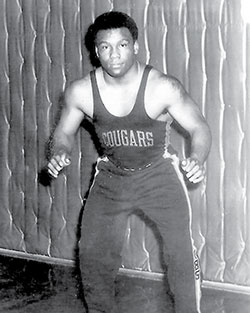
Jim Edwards a 1982 graduate of Charleroi High School was an outstanding threesport letterman as a football player, champion wrestler and baseball player. Jim was a two- time All Century Conference performer as a running back and linebacker under head mentor Bob Hodgson. It was on the offensive side of the ball where he excelled. As a junior he rushed for 1,052 yards and scored 23 touchdowns and was the conference’s leading scorer. Jim was named Cougar Back Coaches awardee of the 1980 season. Jim stood 5’8” and weighed 168 pounds. One of his coaches Daryl Hixenbaugh recalled Jim’s competitiveness and work ethic. Jim was born February 9, 1963, the son of Robert Thomas Edwards and Barbara Madison Edwards.
As a senior Jim helped lead the Cougars to the Century Conference title in 1981 and rushed for a school record 1,420 yards and again scored 23 touchdowns with138 points scored. Charleroi had a 9-1 regular-season record and a 6-0 Century Conference record. He led the Cougars into the WPIAL playoffs where Charleroi lost in quarter-finals to Jeannette 13-0 at Latrobe, after beating South Park 10-7 in the first round. Edwards was joined in the backfield by running back Willie Davis who rushed for 1,334 yards. Forming one of the best one two punches in Western Pennsylvania, Coach Hodgson, commented that Edwards “was one of the best running backs ever at Charleroi and was a very intense competitor.” Edwards was again a unanimous choice for All Century Conference and the Cougars finished the season with a 10-2 record. He was named Honorable Mention All-State. Other accolades included the YMCA Pittsburgh Outstanding Athlete Achievement award, Leslie Morgan award, and nomination for the Pennsylvania Big 33 Classic football game.
Jim was also an outstanding wrestler for Coach Lee Hall. Hall also was the trainer on the Cougar football squad. He was a three-year letterman and won the Big Ten Tournament and the section title as a sophomore at 167 pounds and finished the season with a 29-3 record. As a junior Jim again won the section title at 167 pounds and set a school record for most wins in a season. He lost in the WPIAL finals at California University of Pennsylvania to Burgettstown’s Mike Marshall. He had defeated Marshall earlier in the season, but during his match in the finals he pulled a rib cartilage and had trouble breathing. He went to Hershey for the state tournament. During the semi-final match he suffered a rib injury. Jim won the match injured and decided to wrestle in the final. Jim lost in that final. He finished the season with a 31-1 record.
As a senior in 1982 Jimmy again was the section champion with a 24-0 mark. He missed 3 weeks of the season with a neck injury. Jim won the WPIAL Class AA title with a pair of pins sandwiched around an 8-0 major decision at California University and went to the state tourney with a 24-0 record. Coach Hall said Edwards’ strong point is his “takedowns. Jim’s really strong on his feet and he is easy to coach because he likes to learn things.” He won the first match in Hershey over Frank Ross, but lost in the second round in two overtimes and the match was decided with fourth criteria (most reversals). Jim lost the consolation match and added that his “heart” just wasn’t in it after the overtime defeat in the previous match. He finished the season with a 25-2 record and was named the number one wrestler in his weight category in the WPIAL.
Jim ended his high school wrestling career as the winningest wrestler in Charleroi High School history with a record of 85 wins and 6 losses. Jim was the recipient of the Jeff Gilchrist Memorial outstanding wrestler award.
Jim recalls, “One of those memorable moments in high school wrestling was a wrestling tournament in Hughesville, Pennsylvania hometown of my wonderful high school coach Lee Hall. He was excited to take his team to his hometown tournament. I won four matches.”
Jim had an exciting baseball career in high school performing for Charleroi High’s coach Fran Celaschi. As a centerfielder during the 1980 thru 1982 seasons, the 1982 team went to the semi-finals of the PIAA. In 1979 Jim performed for the Mon-Yough South Colt League baseball team which consisted of All Stars throughout the Mon Valley. The summer for Jim was dedicated to the popular Charleroi American Legion baseball squad.
Jim received a football scholarship to Indiana State in Terre Haute, Indiana. He was a three-year starter at fullback for the Sycamores and was named the team’s Most Valuable running back. As a sophomore he was third on the team in rushing with 266 yards on 71 carries for a 3.75 average. As a junior Jim was injured most of the year but still gained 157 yards. As a senior he gained 310 yards and was an excellent blocker who cleared the way for the other running backs.
Today, Jim resides in the state of Indiana with his wife Devitta Bass Edwards and the couple are the parents of three daughters Ashley, Chelsie and Regine Edwards Benton. Jim has performed coaching duties in his community.
Joseph John Fedorchik, Jr. M.D.
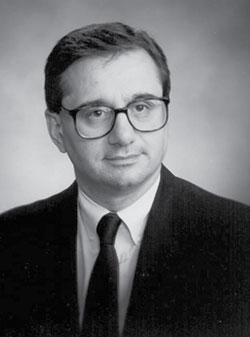
Joseph John Fedorchik, Jr. M.D., Cardiothoracic and Vascular Surgeon and longtime resident of College Station, Texas, died Monday, March 28, 2016, at age 67. Passionate and committed to quality care for his patients, this loving family man’s work was also his ministry, and he lived to serve within it.
Born on June 6, 1948, in Charleroi, Pennsylvania, Joe grew up there with his sister, Jolynn Fedorchik (of Katy, TX) and his brother, John Francis Novicki (and wife Linda, of Monessen, PA). Their parents—Joseph Sr., and Josephine Rufola Fedorchik, a steel worker and a nurse, respectively— raised their family in humble circumstances, moving often. As a result, Joe matured quickly, going his own way until he met gymnastics coach Baldo “Bud” Giannini (now deceased), who became a father figure and mentor to him. Coach Giannini not only introduced Joe to gymnastics, but also took him to Mass on Sundays and taught him discipline, integrity and other values that served him well.
A 1966 Belle Vernon Area High School graduate, Joe was a four-year regular in high school (Bellmar and Belle Vernon Area) and capped his gymnastic scholastic career by winning the PIAA (state) individual championship and helping BVA capture the state team title as a senior in 1966. He and three-sport star Gary Cramer shared the Robert Van Bremen Memorial Award, named in honor of the late high school principal. Fedorchik, who ranked among the Top Five students in his graduating class, was honored for his athletic and academic achievements.
Fedorchik, who won two WPIAL individual championships (1965 and 1966) during his scholastic career, also competed with the Monessen Sokols in national tournaments.
“Danny Warbutton, MMVASHOF class of 2003, and I both were members of the Sokols, traveled with them and competed in meets in such places as Canada, Chicago and Dallas,” he said. “We gained individual competitive experience that served us well in the large inter-school competitions.”
Fedorchik and Warbutton became friends through their association with the Sokols.
“Danny was a skinny, young, very pleasant and impressionable teammate,” Fedorchik recalled. “We became friends even though I was two years ahead of him in school. Our association was based on our love of gymnastics and the generosity of his mother, Wilma Warbutton, to see that I got to practices and was able to influence and mentor Danny in his formative years.”
Fedorchik also cited Don Peters and Bruce Vannucci as teammates.
“Bruce worked hard, was a very gifted athlete and finally realized his potential in his junior and senior years,” he said. “He was a very integral member of the team who contributed greatly to our success in the WPIAL and particularly in the state meet in 1966.”
Fedorchik, Warbutton, Vannuci and Peters posted first place finishes in key events in the state meet at The Pennsylvania State University and also scored well in other events to lead BVA to the team championship. The Leopards had a 6-0-0 mark in dual competition that season, won the WPIGL Section 6 title, were second in the WPIGL team tournament and captured the American Athletic Union/Allegheny Mount Association championship.
“We had many other outstanding teammates who were dedicated individuals and supported us as a team in dual meets throughout high school,” Fedorchik said. “I admired many of those individuals, even though they might not have reached the athletic pinnacle of their potential. Practice for me was always more fun than competition.”
Those practice sessions included two to three hours after school and, after a bite to eat, another one to two hours at the Sokols. Saturday and Sunday workouts at the Sokols also dominated the schedule.
Fedorchik credits his early gymnastics coaches, John “Corky” DeMillion, MMVASHOF class of 2004, of Bellmar and Belle Vernon Area high schools and Baldo “Bud” Giannini of the Monessen Sokols, with pointing him in the right direction.
“Mr. DeMillion was the finest and most knowledgeable and proficient coach I ever had,” he said. “He knew technical and mechanical demands of the sport, was soft-spoken, even tempered and was always encouraging. He was an exceptionally fine man and a role model.”
“Bud Giannini was awe-inspiring and motivational. What he may have lacked in technical knowledge, he more than supplanted with an ability to inspire through a positive, constructive and self-confident manner.”
Giannini’s impact on Fedorchik’s life went far beyond the realm of gymnastics. They met for the first time when Fedorchik was 14 and was invited to take lessons at the Monessen Sokols Club.
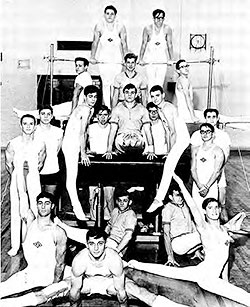
1966 Gymnastic WPIAL & PIAA Class AA Championship
Starting at the bottom from left to right; Joe Fedorchik, Bruce Vannucci, Dan Warbutton, George Billak, Dave Peters, Gene Reynolds, Mark Druciak, Bill Cummings, Darrell Vannuci, Gary Van Gremen, Don Peters, Jim Delia, Bob Scholl, Keith Todd, Tom Nicolette, Rick Smereczniak, Bruce Curry, John Bezego, Lee Hackenson.
“Aside from gymnastics, all I did was study,” Fedorchik said. “I frequented the library and under the tutelage of Mr. Giannini, I not only studied my schoolwork but also history, mathematics, vocabulary, English, ethics, philosophy, literature and other subjects. (Giannini) even had me submit to him pieces of creative writing to increase my verbal facility, and we would discuss all of these things at length during long car trips to tournaments or during down times before and after practice.
“It was Mr. Giannini who gave me my first dictionary, my first thesaurus and my SAT study guidebook as gifts. He constantly urged me to study to maintain my GPA (Grade Point Average). He said it was as or more important than my SAT scores and that my gymnastic abilities would not be enough to get me into a Tier 1 school without these accoutrements.” Fedorchik made an auspicious debut at Michigan State University.
Competing in the first Big Ten Conference Freshman Meet in March 1967, he topped all individuals with 51.40 points. He placed sixth in the Midwest Open in December 1966, and his coach, George Szypula, heralded him as “one of the finest all-around competitors in the country.”
Fedorchik, whose strengths were floor exercise, vault, high bar and parallel bars, was a key member of Michigan State’s Big Ten championship team in 1968. He also qualified in 1967 for the AAU Pan-American team trials and advanced to the final competition. In 1968 he placed fifth in optional exercises and eleventh in All-Around for the NCAA in an Olympics year.
As a university student, Joe worked long hours to pay for food and other expenses, and his pragmatic persistence continued to emerge during this period as “he did what it took to get stuff done.” Although he carefully considered military service, a gymnastics injury kept him from enlisting. He concentrated on school and work, and met Bette Winter, who was introduced to him by some gymnastics teammates. Knowing she played tennis, Joe showed up at her door with a tennis racket—which he had no idea how to even hold. While Bette often said it was the funniest match ever, the plan eventually worked and led to their match as a couple. Since time and money for a wedding was limited, Joe and Bette first married in a civil ceremony on July 30, 1981. Later, on August 10, 1984, they enjoyed a private church wedding. At length, the Fedorchiks welcomed three sons into their family: Joseph J. “Joey” Fedorchik III (of Waco), USAF Captain Mikhail “Misha” Fedorchik (of Vacaville, CA) and Thomas Fedorchik (of San Antonio). Joe loved being a father; he once threatened to quit the medical program after administrators balked at giving him time off to witness Joey’s birth.
Joe’s career aspirations were high, and he worked relentlessly to achieve them, graduating from Michigan State University with a Bachelor’s in German, continuing on to the University of Michigan for his Medical Doctorate. He then pursued an internship and residency in General Surgery (Parkland Memorial Hospital, in Dallas), with an additional residency and fellowship in Cardiovascular and Thoracic Surgery, as well as Peripheral Vascular Surgery (Rush Medical College, Chicago). Among his many accreditations and awards were membership within the Brazos-Robertson County Medical Society, the Society of Thoracic Surgeons, Parkland Surgical Society, the American Heart Association, the American College of Chest Physicians, the Texas Medical Association, Phi Beta Kappa and Phi Kappa Phi. Dr. Fedorchik was also appointed as Clinical Instructor in Surgery (UT Southwestern Medical School), Instructor of Surgery and Adjunct Attending (at Rush), and Assistant Clinical Professor of Surgery (TAMU Medical School) in 1990. Dr. Fedorchik also served as Attending and Cardiothoracic Surgeon at St. Joseph Hospital in Bryan (since 1988) and Attending Surgeon and Founding Member of The Physician’s Centre (also since 1988).
Ultimately, Dr. Fedorchik dedicated the bulk of his time to his patients. While at home, Bette tended to their sons and organized domestic affairs, handling repairs around the house herself. Their sons were each high achievers—with two pilots and a pianist/composer now among them—and Bette knew how to address the unique, individual needs of the four gifted men in her household. (Joe’s last wish was for his dear friend, Monsignor Malinowski, to take care of Bette, and for Bette to watch over their surviving sons). In Joe’s time away from his office, he traveled with his family (eventually overcoming his fear of flying) and loved going on trips with his boys. He enjoyed long walks on the beach in Florida while listening to classical music or Celine Dion; he loved watching Fox news, gymnastics, Aggie football and The History and Military Channels; his favorite meal was steak and pasta—with a homemade sauce—often followed by a mix of jelly beans, Dots and popcorn for dessert. Honest to a fault, he was frank and forthcoming with advice, whether it was solicited or not. Occasionally, in later years, he’d meet friends for coffee at Barnes & Noble, just to chat and enjoy their conversation. He attended St. Anthony’s (in Bryan) and St. Thomas Aquinas (in College Station). His favorite movie was The Shoes of the Fisherman, which features devoted men making difficult decisions as they carry out demanding callings—a scenario which he had faced personally and professionally while walking through “the valley of the shadow of Death” with his patients on a daily basis.
(Grateful acknowledgement to Ron Paglia for his bio that appeared in The Valley Independent July 25, 2015.)
Ken Kulak
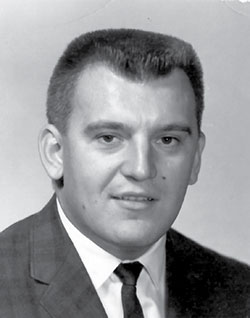
Upon Ken’s unexpected passing on April 26, Valley Keeper of Mon Valley memories Ron Paglia, a member of the MMVASHOF Class of 2013, reflected, “Ken was such an outstanding athlete and deserving of the HOF recognition. And more important, he was a genuine good guy with a great family.”
The first game in which the Mon Valley would begin to take note of a young California junior high athlete, Ken Kulak, was a junior high basketball game against Monessen. California beat Monessen 47-37 in a game in which “the five-feet-nine cagier tossed in 40 points, more than the entire Monessen junior high school quintet”. This breakthrough in the Mon Valley sports scene began an athletic career that would see Ken excel in football, basketball and baseball that would span some 12 years of success.
Ken “KK” Kulak is a 1958 graduate of California Area High School. He is considered one of the best all around athletes in the school’s history as a triple letterman, earning a total of nine letters in football, basketball and baseball.
In baseball, he was a solid second baseman. So prodigious was Kulak as a junior high athlete, he made the varsity team in ninth grade and played as a backup infielder and went on to make the 1958 American Legion All Stars. As much as he enjoyed baseball, he primarily focused his athletic interest more towards football and basketball.
In basketball under Coach Bill Watkins, he became a starter his sophomore year and continued to lead his team as the only senior starter in his last year as he scored 453 points in 21 games. He had three 30 point games and finished that year with a scoring average of 21.6 points per game and ranked third in Section scoring behind Brownsville’s Bob Chuey and Charleroi’s Ollie Payne.
After high school graduation, he went on to West Virginia University in his freshmen year to try out for the basketball team as a walk-on. He made the final 10 cut of some 50 walk-ons, but severely sprained his ankle in a scrimmage in the final cuts as the WVU team went on to play in the National Championship game to lose only by two points. Because he wasn’t offered a scholarship, he transferred to California State Teachers College for the remainder of his college sports career, focusing on football.
In high school football, Kulak was a three year starting quarterback known for his ability to escape the grasps of opponents with ease. He found open receivers with his quickness, accuracy and pin-point handeye coordination. A triple threat quarterback, he could run, pass and punt the ball. He made the All-Washington County Team and played in the annual Washington-Fayette County Football Classic.
Kulak went on to play football for the California Vulcan’s in 1960 under coaches Ted Nemeth and Bill Hepner. He started his sophomore year as a defensive back and served as starting quarterback in both his junior and senior years. In his senior year at 6’1”, 180 lbs, he was the leading small college quarterback in the country before breaking his elbow in the Slippery Rock contest, which was the Vulcan’s only loss that year. Up to that time, he was leading the nation (NAIA small colleges) in two categories; total offense with over 1,000 yards and team passing with 556 yards. His dislocated elbow injury ended his college football career; he went on in his post college years to play semi-pro football for the Pittsburgh Ironmen.
Playing for the Ironmen, in his first appearance as quarterback against Hazelton Mustangs, Kulak threw for 170 yards and 7 first downs threw for 2 touchdowns and had a quarterback sneak for a 1 yard touchdown. Against Newark, NJ, Kulak threw a 99 yard touchdown “double-shuffle” pass from the one yard line to Marv Watson, a college teammate, which was one of the longest touchdown passes in the Atlantic Coast Conference. In September of 1962, Ken joined the faculty at California High School as a biology teacher. At that time he became an assistant football coach under head coach Pete Petroff and assistant basketball coach for 7 years under head coach Buckey Bolyard, where their teams played in 3 WPIAL Championship games. He was named head coach of his alma mater for the 1970 season and remained as head coach for five years. His coaching record was 27 wins and 18 losses. He coached many players who received scholarships to schools including West Virginia University, Kentucky University, Duke, Nebraska and the University of Pennsylvania. He left coaching for 15 years and returned again to coach with Pete Petroff for four years, during which they took their team to the 1986 WPIAL Championship game against Farrell High School.
In 1976 Ken was inducted into the California High School Trojan Booster Club Hall of Fame. Ken’s father, John Kulak, was also inducted to the Hall of Fame in 1966.
Born July 4, 1940, a son of the late John and Pauline Stefanik Kulak, Ken was married to Dorothea (Dia) Encrapera for 55 years. They are the proud parents of three children, son Ken and daughters Kristen and the late Natalie, who was also one of the California High Schools most decorated female athletes, along with two grandsons, Brendan and Michael Folmar.
Brigadier General David Papak
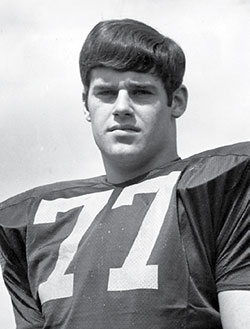
Retired Brigadier General David Papak, US Marine Corps, began his involvement in sports on the ball fields and courts of the Mon Valley and ended his playing career on the football field of the United States Naval Academy.
In September of 1967 Papak began his freshman year at Mon Valley Catholic High School and proceeded to earn three letters each in basketball and in football. During his sophomore and junior football campaigns Mon Valley Catholic won the Section Two title in the Catholic League as that League had not yet merged with the WPIAL. In his junior year Papak was an All-Catholic selection in both basketball and football and during his senior year he was selected first team All-Catholic in both sports. Exhibiting the leadership that has always been his hallmark, he was chosen as co-captain in both sports his senior year. His varsity basketball coach, Phil Pergola, had these comments: “Dave led the team in rebounding during his sophomore, junior and senior years and was instrumental in turning the program into a consistent winner. He was an overachiever on the court and constantly set the tone at practice. Some 34 years later I still mention Dave’s attitude and accomplishments to my teams.”
During his football days in high school, Papak did double duty as a defensive linebacker and offensive tight end. He caught 33 passes for 358 yards and scored 7 touchdowns as a senior and was recognized for his overall achievements and determination when he was nominated for the Pennsylvania Big 33 Team at the end of that year.
When ask to share his memories of David Papak, his head football coach Tom Donahoe had this to say: “ We were blessed with some outstanding student/athletes at Mon Valley Catholic at that time and Dave was at the top of the list. He was raised by wonderful parents who instilled all of the right values in him. His work ethic set the example for the rest of the team and they followed Dave’s lead. Even at the high school age you could see his leadership qualities. He set the tone by both his actions and words and his success in college and beyond is no surprise to those of us who worked with him in high school. There was NO ONE on our team who exhibited more mental and physical toughness than Dave. When circumstances were toughest he was always at his best. I will forever be indebted to Dave for all he did for the team and for me. It was a great honor to teach and coach Dave Papak.”
Before receiving his appointment to the United States Naval Academy, Papak was offered athletic scholarships to Arizona State, John Carroll University and Villanova University. He was also accepted for appointment to the United States Military Academy at West Point which he initially accepted. When word of his appointment to the U. S. Naval Academy at Annapolis was received there was no hesitation. It was his dream and his acceptance was immediate. In the words of Bob Gardner, local sports writer at the time: “Make that two straight football victories for Navy over Army in the last six months. Last fall Navy upset Army in their annual grid classic and now Navy has scuttled West Point’s bid for the football services of Mon Valley Catholic’s Dave Papak.”
Papak played football for four years with the Navy Midshipmen, lettering in 1973, 1974 and 1975. He started in 33 consecutive games as a defensive tackle during these years and helped Navy go undefeated against arch rival Army over that period. In both 1973 and 1975 Navy won the coveted Commander-In-Chief s’ trophy with victories over Army and Air-Force. After the 1973 Army-Navy game Papak, as a sophomore, was recognized as the ‘Defense Player of the Game’ by both the Mutual Broadcasting System and the ABC Team of Sportscasters.
He led the Midshipmen defensive linemen in playing time in both 1973 and 1974 and, as a junior, was selected ‘2nd Team All-East’. He recorded 99 tackles as a down lineman that year and recovered 2 fumbles while playing a very rigorous schedule featuring three top ten opponents in Notre Dame, Penn State and Michigan. Navy’s schedule that year also included games with Virginia, Syracuse, Boston College, Pitt, the Citadel as well as the perennial rivals of Army and Air-Force.
Navy coach George Welsh made this comment regarding Papak as he started his senior year: “Dave is one of the outstanding tackles in the east. He was our most dependable defensive lineman the past two seasons and he has improved himself. In fact, he’s now head and shoulders above where he was a year ago”. Papak went on that year to receive ‘All-East’ honorable mention.
It was also in 1975 that Navy, with senior Dave Papak at tackle, shut out the Tony Dorsett led Pitt Panthers by a score of 17-0. Dorsett accumulated 122 yards rushing while the Panthers were shut down for the first time in 66 games. At that time Navy’s defense was 2nd in the country to Texas A&M.
In December of 1975, Midshipman Papak returned to the Mon Valley to be honored by the Monongahela Valley Sportswriters-Sportscasters Association at the 26th annual Big 10 Banquet. He was accompanied by Navy coach George Welsh who, along with Pitt coach Johnny Majors, were the featured speakers for the event. The Master of Ceremonies for that evening was the renowned Bob Prince, for many years the voice of the Pittsburgh Pirates.
Upon graduation from the Academy Papak had interest expressed from several pro teams but was committed to his extended obligation with the U.S. Marine Corps. He did continue in the football world for some time as a Navy assistant coach and a varsity football recruiting coordinator during a tour at the Naval Academy from 1983-86.
Papak was commissioned in June of 1976 upon graduation from the U. S. Naval Academy and, after 33 years of dedicated service to his country, retired as a Brigadier General of the United States Marine Corps. His achievements during those years were numerous and impressive.
He was designated a Naval Aviator and Helicopter Pilot and served in numerous operational, staff and command assignments including deployment in 1990 to South Asia with the 2nd Marine Division in support of operations Desert Storm/Desert Shield.
Colonel Papak was selected Brigadier General United States Marine Corps in September 2004. From July 2005 to July 2007 he commanded the 4th Marine Air Wing in New Orleans providing units and individuals in the continued support of the global war on terror in addition to rescue, recovery and relief operations for hurricanes Katrina and Rita.
In July of 2007 B/Gen Papak assumed Pentagon duties as Director, Joint Capabilities Assessment and Integration Directorate and continued in that position until his retirement.
B/Gen Papak holds a Master of Science Degree in Systems Management and Safety from the University of Southern California, Washington, DC Graduate program. His formal military education includes Naval Aviation Flight Training, Civil Military Operations, Reserve Amphibious Warfare School, Command and Staff Reserve Course, Expeditionary Warfare Staff Planning, International Joint Warfare Staff Course, Combined Forces Air Component Command Course, the Program for Executives of Logistics and Technology, the Senior Reserve Officers Course and the Navy Executive Business Course. His personal decorations include the Joint Service Commendation Medal, Meritorious Service Medal with one star, Navy Marine Corps Achievement Medal with two stars, Combat Action Ribbon and various unit awards.
After his retirement in 2009 B/Gen Papak continued to work in the corporate world as a senior level sales and business development executive while maintaining an association with the Department of Defense. During these years he also has dedicated much time and energy to the Travis Manion Foundation (TMF) serving in a dual role as a nationwide presenter of its ‘Character Does Matter’ program, designed to develop leaders among our youth, and as the director of the TMF Annapolis 9-11 Heroes Run which honors all community first responders as well as those who wear the military uniform.
In November of 2014 Retired B/Gen Papak returned once again to the Mon Valley as the principal speaker at the 239th Marine Corps birthday observance held by the Mon Valley Leatherneck Association.
B/Gen Papak is married. He and his wife Kate have three children and five grandchildren and are currently residing in Annapolis Maryland with intentions of soon returning to the Mon Valley.
Wilbert “Barney” Wolfe
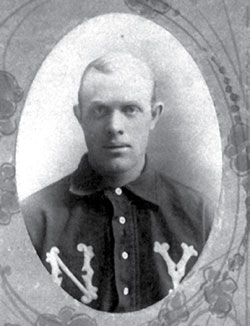
Longtime sports editor Johnny Bunardzya of the Charleroi Mail wrote upon the passing of Wilbert O. “Barney” Wolfe March 3, 1953, that “he was a pioneer among Mon Valley baseball products who crashed the Big Leagues.” His four years of MLB baseball, 1903- 06, during the turn of the century, was certainly memorable. Wolfe was born in Roscoe, Pa on January 9, 1876. He attended school in California, Pennsylvania and later moved to nearby Charleroi which he listed as his home while a major league pitcher. In the off-season he worked in the coal mines as many athletes did in that era. Wolfe began his pitching career on the sandlot fields in the Mon Valley in 1897 and even shut out the Pirates in an exhibition game in Charleroi. Next, he played for the Kansas City Blues of the Western League where his performance was noticed by MLB and especially the American League’s New York Highlanders.
The Highlanders brought him to the Majors in 1903 at the age of 27 with his debut on April 24. This was the first year for the New York baseball team, which would later become the Yankees. They were called the Highlanders because they played on one of the highest points of Manhattan (“The Hilltop”). The New York press later would give them the nickname Yankees, the word that was a synonym for American. Barney’s first year saw the first World Series played.
Teammates with Barney on the 1903 Highlanders included Hall of Fame players that included outfielder Wee Willie Keeler, pitcher Jack Chesbro, pitcher Jesse Tannehill, and pitcher-manager Clark Griffith. Clark Griffith was Barney’s manager while he played for the Yankees and was considered to be the single player that gave legitimacy to the American League. Clark Griffith eventually became the owner of the Washington Senators.
Barney pitched in 20 games in 1903 and won six games and lost nine with an ERA of 2.97. One of his losses that year was to the Philadelphia Athletics’ Hall of Fame Pitcher Rube Waddell. In 1904, Barney pitched in seven games for New York with no wins and three losses before he was traded to the Washington Senators on July 20, 1904 for Al Orth. He pitched in 17 games for Washington with six wins and nine losses with an ERA of 3.27. Remarkable about his record with Washington in 1904 was the team’s record, which was 38-113. Finishing, 55 games out of first place. In 1904, Barney pitched against several Hall of Fame players including Addie Joss, Al Orth, Clark Griffith, and Rube Waddell. Wolfe played in 28 games for Washington in 1905 winning nine and losing 13 with an ERA of 2.57, the second lowest on the team. That year Wolfe pitched his most innings at 182.0 and performed two of his career highlights. The first was Barney pitching against the Red Sox’s Cy Young on June 30 in a 2-1 loss. The second highlight was Barney pitching against a young player named Ty Cobb. Detroit had called Ty up the previous month on August 30. The game was played on September 30 and Barney defeated Detroit in the game, 3-1. Other Hall of Fame players he pitched against in 1905 included Jesse Tannehill, Jack Chesbro, and Bill Donovan. Barney also hit a homerun in 1905, a rarity in the dead ball era and especially for a pitcher.
In 1906, Barney played in four games with no wins and three losses with an ERA of 4.05. The only Hall of Fame player he pitched against that year was the legendary Chief Bender. Barney developed a sore arm and the Washington Senators sent him down to the Tri-State League, a minor league affiliate in Wilmington, Delaware. Wolfe also managed a Charleroi squad in the Pennsylvania-Ohio-Maryland League in 1907 and the Central League before ending his baseball career in 1912. Barney’s final MLB career pitching record was 21 wins and 37 losses with a 2.96 ERA, and a 9.55 fielding percentage.
After his playing days, Barney went to work for the Page Division of the American Chain and Cable Company in Monessen, Pennsylvania prior to World War I. In 1919 Barney began work at the Pittsburgh Steel plant in Monessen in the open hearth department before becoming a watchman.
In 1952 the Yankees invited Barney and all of the players from the 1903 team to celebrate their Golden Anniversary during their Old-timers Day at Yankee Stadium. Included in this celebration were also the Yankees All-Time Team, but Barney was unable to attend because of poor health. He moved to Belle Vernon and died on February 27, 1953. Mr. Wolfe was 77 and arrangements were conducted by the Harold B. Toner Funeral Home in North Belle Vernon. A Western Union Telegraph sympathy message came from Washington Senators owner Clark Griffith on February 28 to the family; “I always appreciated Barney’s loyalty and friendship.”
Tonight a statement by Johnny Bunardzya , MMVASHOF class of 1968, rings true, “If the time ever comes when they build a shrine for baseball sons of the upper Mon Valley who have carved their niche in Big League baseball, at the top or very close to it would be Barney Wolfe.”
Past Inductees
Read about our past Inductees here!